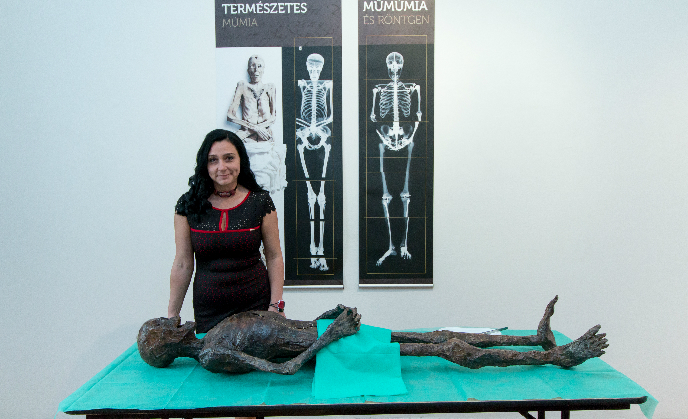Mummy exhibition - without a mummy
EXHIBITION
The exhibition has a long title: A Monk, a Prelate, a Patriot: Pál Széchényi. The Reearch of the Mummy in Nagycenk, but it is worth seeing how it evokes a wonderful life of a great person with lots of reverence and professionalism.
| Berényi Marianna |
2015-09-20 10:00 |
What we see in Győr's Rómer Flóris Art and Historical Museum is the result of a lot of thorough and diverse research. It focuses on a rich life ending in a puzzling fatality, and it does so by bringing together different branches of science and art. Without actually displaying the mummy itself, the exhibition reveals a lot about Széchényi while it respects his personality rights, religion and family. Instead of using the actual corps the curator applies several devices and works of art replacing the mummified body with the knowledge about it.

For a long time Széchényi Pál's story did not fascinate historians and the general public. Anthropologist Lilla Alida Kristóf, the curator of the exhibition, started to think about this story back in 2006, and soon she was leading a multi-skilled group of professionals to dig deep in the life story of the archbishop.
The examinations carried out then clearly refuted the century old rumours that Széchényi was poisoned. Contrary to the anecdotes his body did not mummify because of the arsenic that was supposed to have caused his death. Ms. Kristóf suspects that the preservation of the body was a deliberate act in order to make it possible to bury him according to his rank. Organising a proper funeral for somebody at his social standing took several weeks back in those times. The exhibition, thus, explains the castrum doloris from the 17-18th century which was a richly ornamented structure designed by well-known artists of the era. Most probably it was erected for Széchényi's funeral too.

Pál Széchényi's body was only taken from Sopronbánfalva to Nagycenk to the family vault in 1811, one hundred and one years after his death. His family received the count title in 1697 while he held bishop and archbishop positions between 1667 and 1710 in several Hungarian towns. He was asked to mediate between the Habsburg court in Vienna and the rebelling Hungarians led by Francis II Rákóczi. His efforts were unsuccessful and finally both parties turned against Széchényi.
While the historical sources help to reconstruct the most important stages of Széchényi’s life, some software reconstructs his body. The 4D anatomy modelling technology, developed by a Hungarian neurosurgeon, Dr. Attila Balog, enables us to de- and re-construct the human body, tissue by tissue. Visitors can touch and examine a model of the bishop’s skull as well as a plastic skeleton which demonstrates the effect of the DISH syndrome, a disease Széchényi was suffering from. There are fascinating works of art that evoke the mummy and allow the visitors to immerse themselves in the details of mummy research.
The exhibition, on the one hand, invites visitors to systematically examine and de-construct the body with the help of a modern science based on high technology, and, on the other, with the help of art and the science of history they can also put Széchényi’s life fragments together into a whole. In the Magyar Ispita’s zigzag rooms one can see an exhibition which re-introduces a somewhat forgotten person and his life using the methodology of different sciences and thus outlining a new type of museology.

A Monk, a Prelate, a Patriot: Pál Széchényi. The Research of the Mummy in Nagycenk, is open until 30 September in 3. Nefelejcs street, Győr.